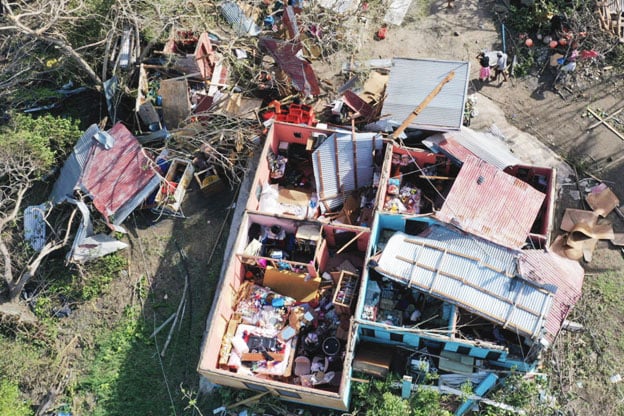It is not unlikely that the swiftness with which Hurricane Beryl came and went may have, in the minds of observers, lessened the condition of ruin and devastation which it left behind. It is only after a physical assessment of the extent of the damage and how this translates into actual costs that a real impact can be appreciated. In its Sunday November 24 issue, the Jamaica Gleaner sought to do just that by transforming the physical extent of damage into ‘dollars and cents,’ a pursuit that helps to underscore the true extent of the damage that this devastating natural disaster left on the its victims in the region.
According to the report, after Beryl had ‘waltzed’ its way through the island, it had, in the wake of its ‘flying visit’ inflicted damages totaling J$32 billion, effectively sending the entire Jamaican economy into decline. The impact could be felt, for example, through visual images of roofless buildings, including schools, long after Beryl had come and gone. The J$32 billion ‘bill’ which Beryl inflicted on the Jamaican economy had targeted, particularly, the agriculture and mining sectors, causing the economy to contract by 2.8% during the July – September quarter while the outlook for the December quarter remains cloudy, according to the Planning Institute of Jamaica (PIOJ). The saga does not end there, however. PIOJ projects that the situation could actually become worse before it gets better, insofar as the country’s economy may contract further by 1.5 per cent for the final quarter of 2024. Poignantly, the Gleaner quotes PIOJ Director General Dr Wayne Henry as saying in his recent quarterly briefing that Jamaica’s economy is likely to contract for the remainder of the current calendar and fiscal year.
After Beryl had barreled down on Jamaica back in early July it had left damage equivalent to 1.1 per cent of the $2.9-trillion economy. The assessment by Jamaica’s PIOJ of the impact of Hurricane Beryl on the island, revealed that its Agriculture, Mining, Tourism, and Infrastructure services experienced the greatest impact. Encapsulated in the figure is $15.9 billion of damage to general infrastructure, $10.3 billion to transportation infrastructure, and $4.1 billion to the electricity grid, ‘numbers’ that laid bare the scale of Beryl’s onslaught on the CARICOM member country. Injecting an upbeat note into what, overall, is a gloomy scenario, Dr. Henry is quoted as saying that “looking ahead, all industries, with the exception of agriculture, construction, hotels and restaurants, and other services are expected to record growth in the short term.” The Gleaner also quotes Dr. Henry as saying that, for agriculture, it is anticipated that the industry will return to a growth path in the new fiscal year in 2025/26.”
Some of the other notable pronouncements in the Jamaican official’s report include the assertion that in the September quarter the goods-producing industry, which includes agriculture, mining, and manufacturing, declined 6.5 per cent. In the instance of the agriculture sector “thirteen of the fourteen parishes recorded a decline in domestic crop production, with agriculture contracting by 13.5 per cent,” according to Henry. The mining industry contracted by 15 per cent, with alumina and bauxite production affected by damage to port infrastructure, according to the Gleaner report.
The impact of Beryl on the infrastructure – and by extension, the economy – of one of the region’s more resilient economies puts into perspective the extent of the damage inflicted on the smaller, more vulnerable member states of the region with analysts already predicting that in some instances, restoration of such conditions as had obtained prior to Beryl’s assault on the region are unlikely to be restored any time seen.
